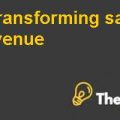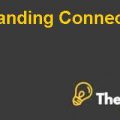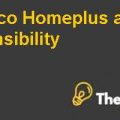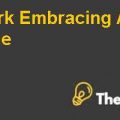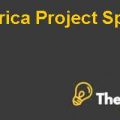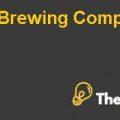
Activity-Based Management at W.S Industries (B)
1. What are the cost model and cost drivers in Activity Based Costing? How they are linked with each other? And how it benefited W.S Industries?
Activity based costing is a costing technique which is used to allocate overheads to wide range of products in a more logical manner. Cost models are basically the activity centres which incur cost and different cost drivers are used in order to allocate cost to a wide range of products. WS Industries have three different cost centres which include internal movement, inspection and process support that are later on be divided by the appropriate cost drivers identified by the company in order to determine cost driver rate.
The purpose of activity based costing is to appropriately allocate the cost to a wide range of company’s products, so as to determine the cost and profitability of the company. This costing technique helped WS Industries to identify the products which were loss making but were actually generating profit and vice versa. Further, the company also discontinued 60 products which had been identified as unprofitable.
2. What is Activity Based Budgeting (ABB)? What are the advantages and disadvantages of ABB? How WS Industries implemented it as a benchmark?
Activity Based Budgeting is a budgeting technique which identifies and analyse the activities, which incur cost and which allowed the organization to understand the relationship between the activities and appropriately create realistic budget for each department.
The major advantage of ABB is that it focuses on overhead cost, which allows an organization to allocate cost accurately among wide range of company’s product that benefits in determining the cost and profitability of the company. Further, it can also provide useful information to Total Quality Management (TQM) by comparing the quality of the product with the cost incurred in order to manufacture the product.
The major disadvantage of ABB is that the management requires sufficient time and efforts in order to identify the appropriate cost model and cost drivers. Further, the short term variance costs are not controllable hence; the management can only report fixed overhead expenditures.
In order to facilitate better planning and appropriate resource allocation, W.S Industries adopted an Activity Based Budgeting (ABB) approach. The company initially predicted the next year’s sales by reviewing the previous records and the expected sales orders which are expected to be gained in the next year. The company also used a Linear Programming (LP) model in order to maximize the contribution margin. Initially the bottlenecks and constraints were identified, which were related to the demand and production capacity. These were later on adjusted by increasing the selling price in order to eliminate the constraint on demand and production capacity.
As long as the sales were identified, reasonable expenses were forecasted in order to match against the sales. The overheads were critically determined and cost drivers were used in order to appropriately allocate overheads to a wide range of products. The company also forecasted the working capital requirement in order to accomplish sales for the next year.
The company used the ABB as a benchmark in order to compare it with the actual performance so as to identify the variance and initial steps that could be performed to eliminate variance. Further, one of the major drawbacks of W.S Industries was that it did not flex the budget when the budgeted sales volume was different from the actual sales because the plant was running at full capacity and if the production exceeded the budget; then the production department refused to buy consumables without proper approval.
- How Activity Based Costing helped the W.S Industries in quoting the selling price? What is customer relationship management and how W.S Industries adopts this strategy in order to achieve its goal?
Activity Based Costing helped the organization to appropriately allocate overhead cost to a wide range of products; which helped the organization to determine the cost related to specific product and price accordingly.
Customer Relationship Management (CRM) is a business strategy adopted by the company in order to manage the company’s interaction with the current and potential customers. The objective of CRM is to satisfy the needs of the customers while satisfying the needs of the organization as well. The organization’s stability is based on repetitive sale, a satisfied customer will provide repetitive sale and will also attract new customers which will ultimately contribute towards the profitability of the whole organization. CRM helps an organization to maintain strong relations with their customers which will enhance its customer loyalty and brand value.
W.S Industries are more sensitive about their customers and strongly focuses on customer satisfaction. The company is committed to provide high quality products at reduced prices, which will ultimately satisfy them and provide an opportunity for them to attract new customers.
There were also instances where the company believed that accepting the customer’s orders would result in a loss to the company but the company still accepted the orders as it believed the fact that this strategy would retain them and provide an opportunity to gain repetitive sale. Further, they also believed that satisfied customers would also attract new customers as well..................................
This is just a sample partial case solution. Please place the order on the website to order your own originally done case solution.

